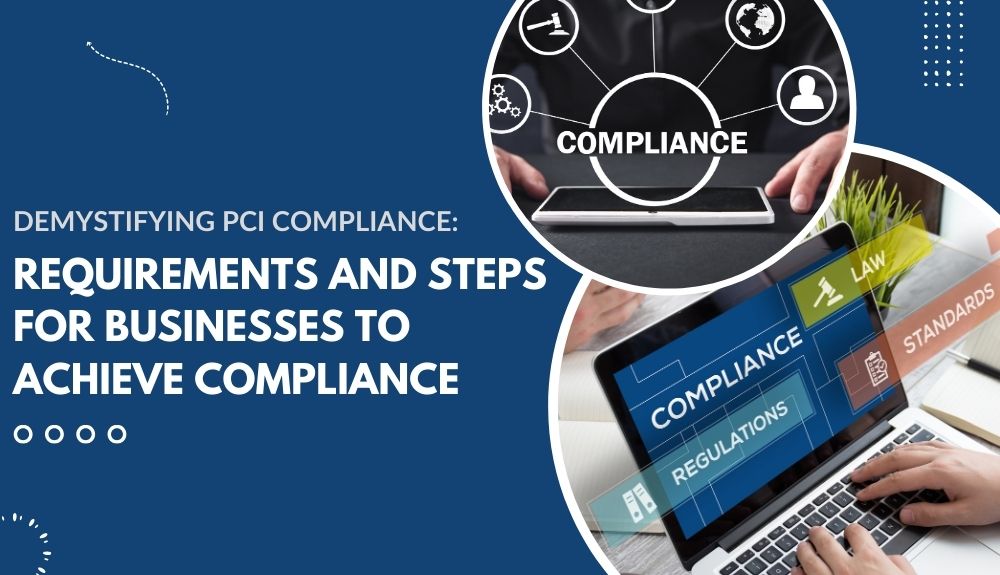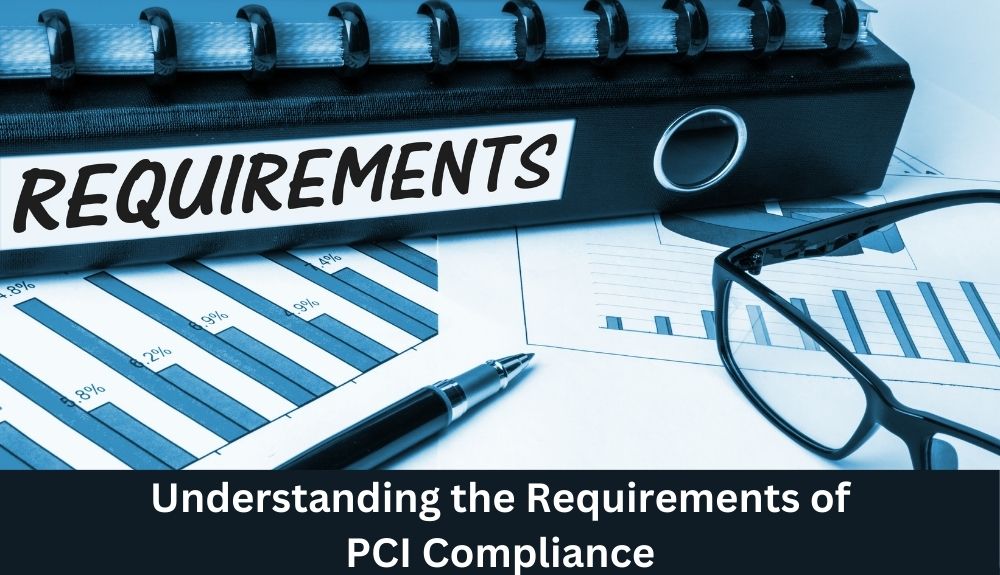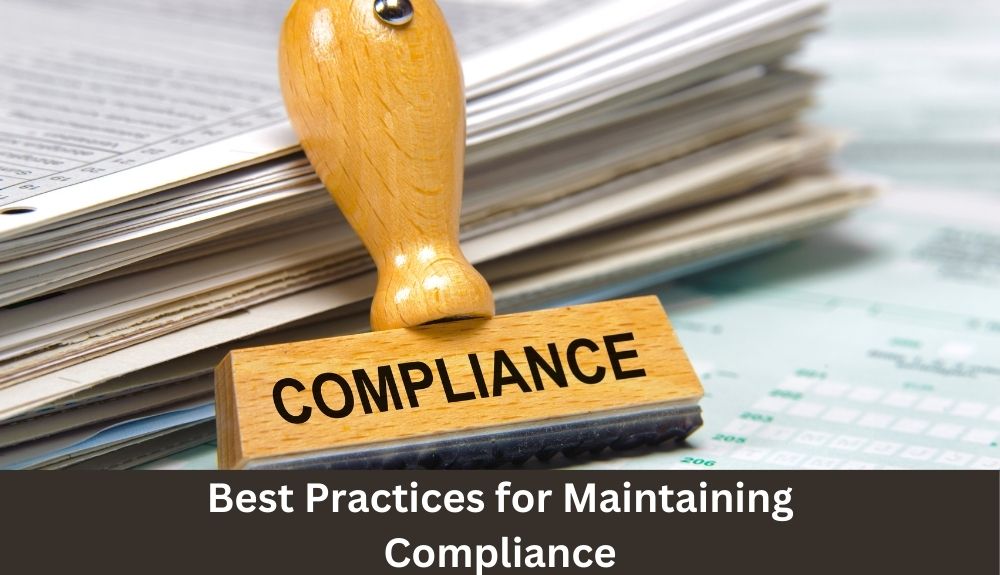
By max February 13, 2024
Welcome to the wild world of PCI Compliance! If you’re a business owner, chances are you’ve heard this term thrown around, causing your head to spin with confusion. Well, fear not! In this blog post, we’re here to demystify all things PCI Compliance and break it down into bite-sized pieces that even the non-tech-savvy can understand. So grab a cup of coffee (or tea if that’s more your style), sit back, and let’s dive into the world of PCI Compliance together!
What is PCI Compliance?
What is this mysterious acronym that keeps popping up in conversations about business security? PCI Compliance, short for Payment Card Industry Data Security Standard (PCI DSS), is a set of requirements established by major credit card companies to ensure the secure handling and protection of sensitive customer payment information. Essentially, it’s a framework designed to safeguard against data breaches and fraud.
To put it simply, if your business accepts credit or debit cards as payment, then PCI Compliance should be on your radar. It applies to all businesses that process, store, or transmit cardholder data – from small mom-and-pop shops to large multinational corporations. The goal is to create a secure environment where customers can confidently make purchases without worrying about their information falling into the wrong hands.
The requirements for achieving PCI Compliance may seem daunting at first glance. They cover various aspects such as network security, encryption protocols, access controls, regular system updates and patches – just to name a few. These measures are necessary not only for protecting your customers’ sensitive data but also for maintaining trust in your brand.
Compliance itself is not a one-time event; rather, it’s an ongoing process that requires constant attention and effort. Businesses must adhere to these requirements continuously and undergo regular assessments and audits by Qualified Security Assessors (QSAs) or Internal Security Assessors (ISAs) approved by the PCI Security Standards Council.
By achieving PCI Compliance status for your business, you demonstrate your commitment towards securing customer data while reducing the risk of costly fines or legal consequences resulting from non-compliance. So buckle up – we’re about to embark on a journey through the steps required to achieve and maintain compliance!
Why is it Important for Businesses?
In today’s digital age, where online transactions are the norm, ensuring the security of customer payment card data is crucial for businesses. This is where PCI compliance comes into play. Payment Card Industry Data Security Standard (PCI DSS) compliance ensures that businesses adhere to a set of security standards aimed at protecting sensitive customer information.
The importance of PCI compliance cannot be overstated. Failure to comply with these regulations can result in severe consequences such as financial penalties, loss of reputation, and even legal action. By achieving and maintaining PCI compliance, businesses demonstrate their commitment to safeguarding their customers’ personal and financial information.
It’s not just about avoiding potential fines or legal issues; being PCI compliant also helps establish trust with customers. When consumers know that a business has implemented stringent security measures to protect their data, they feel more confident making purchases or sharing payment details.
Additionally, complying with the PCI DSS requirements enhances overall cybersecurity posture by implementing best practices for securing networks and systems. This reduces the risk of data breaches and protects against potential cyber threats.
Prioritizing PCI compliance is essential for any business handling electronic payments. It not only safeguards customer information but also instills trust among consumers while enhancing cybersecurity measures within an organization.
Understanding the Requirements of PCI Compliance

When it comes to PCI compliance, businesses need to have a clear understanding of the requirements in order to ensure they are meeting all the necessary standards. The Payment Card Industry Data Security Standard (PCI DSS) is a set of security standards that businesses must adhere to in order to protect cardholder data.
One of the main requirements of PCI compliance is maintaining a secure network. This involves implementing firewalls and regularly updating software to protect against potential vulnerabilities. Businesses must also ensure that any default passwords on their systems are changed, as these can be easily exploited by hackers.
Another requirement is protecting cardholder data. This means encrypting sensitive information such as credit card numbers both during transmission and when stored on servers or databases.
Businesses are also required to regularly monitor and test their networks for vulnerabilities. This includes conducting regular scans for malware and ensuring that all security systems are up-to-date.
Furthermore, businesses must establish strict access controls for employees who handle cardholder data. This involves assigning unique user IDs, restricting physical access to sensitive areas, and implementing strong authentication measures such as two-factor authentication.
Businesses must maintain an information security policy that outlines how they will protect customer data and respond in case of a breach.
By understanding these requirements, businesses can take the necessary steps towards achieving PCI compliance and safeguarding their customers’ payment information. It’s crucial for organizations not only to meet these requirements but also to constantly stay updated with any changes or updates made by the Payment Card Industry Security Standards Council (PCI SSC). Achieving compliance may require time and effort but it’s essential for building trust with customers while minimizing the risk of costly data breaches.
The Steps to Achieve and Maintain Compliance
Achieving and maintaining PCI compliance for your business can seem like a daunting task, but with the right steps, it can be accomplished successfully. Here are some key steps to help you navigate through the process:
1. Assess Your Current Environment: Start by evaluating your current systems, processes, and infrastructure to identify any potential vulnerabilities or gaps in security. This will help you understand where improvements need to be made.
2. Implement Security Measures: Once you’ve identified areas that require attention, take action to implement appropriate security measures. This may include installing firewalls, encryption protocols, and access controls to protect sensitive data.
3. Develop Policies and Procedures: Establish clear policies and procedures around data handling and security practices within your organization. This ensures that everyone understands their role in maintaining compliance.
4. Educate Employees: Train your employees on best practices for handling sensitive information and emphasize the importance of adhering to PCI requirements. Regularly reinforce these training sessions to keep everyone up-to-date on evolving threats.
5. Regularly Monitor Systems: Implement a robust monitoring system that allows you to detect any suspicious activity or breaches promptly. This enables quick response times and minimizes potential damage.
6. Regularly Update Software: Keep all software systems up-to-date with the latest patches and updates from vendors as they often address known vulnerabilities.
7. Conduct Annual Audits: Perform regular audits of your systems, policies, procedures, and employee adherence to ensure ongoing compliance with PCI requirements.
By following these proactive steps consistently over time while adapting them as needed based on changes in technology or regulations – achieving compliance becomes a manageable goal rather than an insurmountable challenge!
Common Challenges in Achieving Compliance
When it comes to achieving PCI compliance, businesses often face a variety of challenges. One common challenge is the complexity and ever-changing nature of the requirements themselves. The Payment Card Industry Data Security Standard (PCI DSS) is a comprehensive set of guidelines that must be followed, and understanding and implementing these requirements can be daunting.
Another challenge businesses encounter is the cost associated with achieving compliance. Implementing the necessary security measures and infrastructure upgrades can be expensive, especially for smaller businesses with limited resources.
Additionally, staying up-to-date with evolving technologies and emerging threats poses another hurdle. Cybersecurity threats are constantly evolving, requiring businesses to stay vigilant and adapt their security measures accordingly.
Furthermore, employee education and awareness also present a challenge. It’s crucial that employees understand their roles in maintaining compliance and follow proper protocols consistently.
Conducting regular audits to assess compliance levels can be time-consuming and resource-intensive for businesses. However, these audits are essential to identify any vulnerabilities or areas that need improvement.
In conclusion: Achieving PCI compliance is not an easy task for many businesses due to various challenges such as complex requirements, high costs, keeping up with technology advancements and emerging threats, employee education needs, as well as conducting regular audits for ongoing validation. Despite these challenges though; ensuring PCI compliance remains critical for protecting customer data from potential breaches while fostering trust in your business operations.
Best Practices for Maintaining Compliance

1. Regularly update security measures: Cyber threats are constantly evolving, so it’s important to keep your security measures up to date. This includes regularly patching and updating software, implementing strong passwords and access controls, and conducting regular vulnerability scans.
2. Educate employees: Your employees play a crucial role in maintaining PCI compliance. Make sure they understand the importance of data security and provide ongoing training on best practices such as identifying phishing attempts, handling sensitive information securely, and following proper procedures for card processing.
3. Implement strong encryption: Encryption is essential for protecting cardholder data both during transmission and storage. Ensure that all sensitive information is encrypted using industry-approved algorithms and methods.
4. Monitor network activity: Implement robust network monitoring tools to detect any suspicious or unauthorized activities on your network. Regularly review logs to identify potential vulnerabilities or breaches.
5. Conduct regular audits: Regular self-assessments can help you identify areas of non-compliance before they become major issues. Perform internal audits at least annually to ensure that all necessary controls are in place.
6. Engage with a qualified assessor: Working with a Qualified Security Assessor (QSA) can greatly simplify the process of achieving PCI compliance by providing expert guidance throughout the assessment process.
7. Stay informed about changes in regulations: The payment card industry is continually evolving, with new standards and requirements being introduced regularly.
Stay abreast of these changes by subscribing to industry newsletters or joining forums where professionals discuss updates related to PCI compliance.
By following these best practices consistently, businesses can significantly reduce their risk of data breaches, protect customer trust, and ultimately maintain long-term PCI compliance.
Conclusion: The Benefits of Achieving PCI Compliance for Your Business
In today’s digital age, protecting sensitive customer data is of utmost importance for businesses. By achieving PCI compliance, businesses can not only safeguard their customers’ information but also build trust and credibility in the marketplace.
The benefits of achieving PCI compliance for your business are numerous. It helps to minimize the risk of security breaches and potential financial losses that can result from non-compliance. By adhering to the requirements set forth by the Payment Card Industry Security Standards Council (PCI SSC), you can ensure that your systems and processes are secure and resilient against cyber threats.
Being PCI compliant demonstrates your commitment to protecting customer privacy and data confidentiality. This instills confidence in your customers, reassuring them that their personal information is safe when doing business with you. It sets you apart from competitors who may not prioritize security measures.
Furthermore, achieving PCI compliance can enhance your reputation as a trustworthy organization within your industry. This can lead to increased customer loyalty and repeat business as individuals feel more comfortable transacting with a company they perceive as secure.
Additionally, many payment processors require businesses to be PCI compliant before they will even consider partnering with them. Being compliant opens doors to new opportunities for collaboration with reputable payment service providers and expands your potential customer base.
Attaining PCI compliance is an ongoing process that requires regular assessments and updates. By implementing best practices for maintaining compliance such as conducting vulnerability scans or penetration tests regularly, you stay one step ahead of emerging threats in the ever-evolving cybersecurity landscape.
In conclusion, Achieving PCI compliance should be seen as an investment rather than just another regulatory burden placed on businesses. The time and effort spent on understanding the requirements, implementing necessary measures, and staying up-to-date with industry standards ultimately pay off by safeguarding both your customers’ data and your organization’s reputation.
